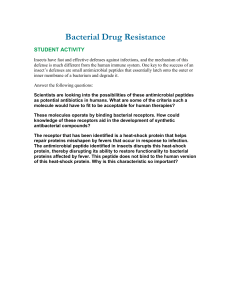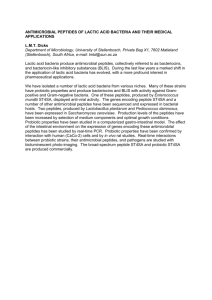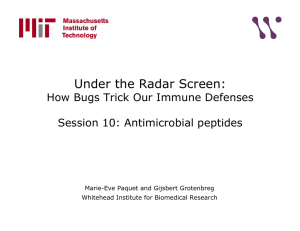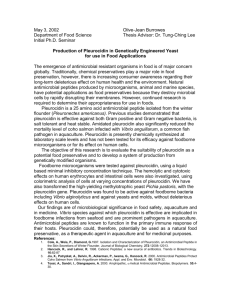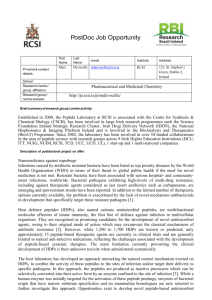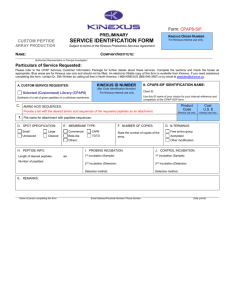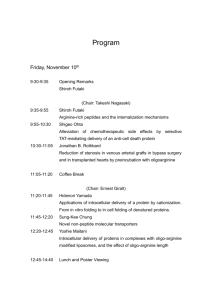Antimicrobial peptides and their action towards bacteria
advertisement
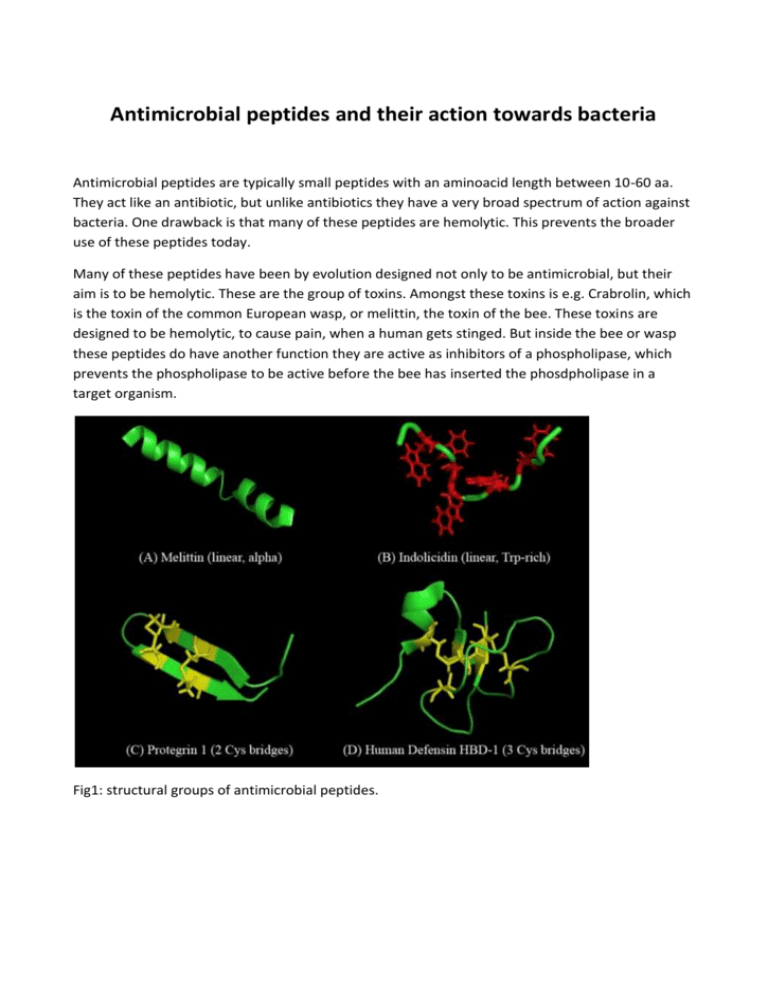
Antimicrobial peptides and their action towards bacteria Antimicrobial peptides are typically small peptides with an aminoacid length between 10-60 aa. They act like an antibiotic, but unlike antibiotics they have a very broad spectrum of action against bacteria. One drawback is that many of these peptides are hemolytic. This prevents the broader use of these peptides today. Many of these peptides have been by evolution designed not only to be antimicrobial, but their aim is to be hemolytic. These are the group of toxins. Amongst these toxins is e.g. Crabrolin, which is the toxin of the common European wasp, or melittin, the toxin of the bee. These toxins are designed to be hemolytic, to cause pain, when a human gets stinged. But inside the bee or wasp these peptides do have another function they are active as inhibitors of a phospholipase, which prevents the phospholipase to be active before the bee has inserted the phosdpholipase in a target organism. Fig1: structural groups of antimicrobial peptides. In this project we intend to synthesis another toxin apart from the bee or wasp toxin. So the first task is to search through databases and literature for a suitable small peptide. You will synthesize the peptide, purify the peptide and investigate its structure and function. The methods that can be used to study the peptide are Circular dichroism, Fluorescence spectroscopy, AFM, absorption spectroscopy, and mass spectroscopy. Supervisors: Peter Fojan, Leonid Gurevich References. 1. Boman, H.G., Peptide Antibiotics and Their Role in Innate Immunity. Annual Review of Immunology, 1995. 13: p. 61-92. 2. Toke, O., Antimicrobial peptides: New candidates in the fight against bacterial infections. Biopolymers, 2005. 80(6): p. 717-735. 3. Parisien, A., et al., Novel alternatives to antibiotics: bacteriophages, bacterial cell wall hydrolases, and antimicrobial peptides. Journal of Applied Microbiology, 2008. 104(1): p. 1-13. 4. H. J. Askou, R. N. Jakobsen, and P. Fojan, An Atomic Force Microscopy Study of the Interactions Between Indolicidin and Supported Planar Bilayers. Journal of Nanoscience and Nanotechnology, 2008, 8(10), p.1-10
